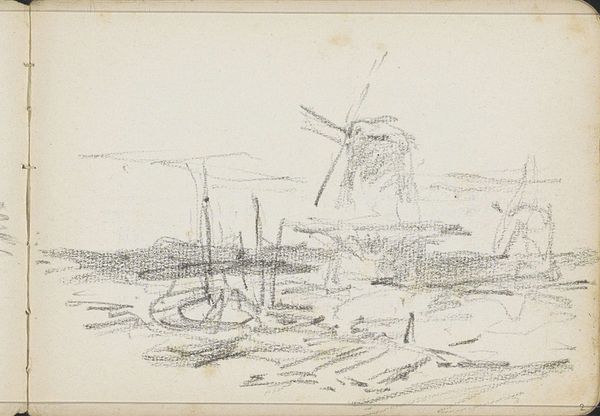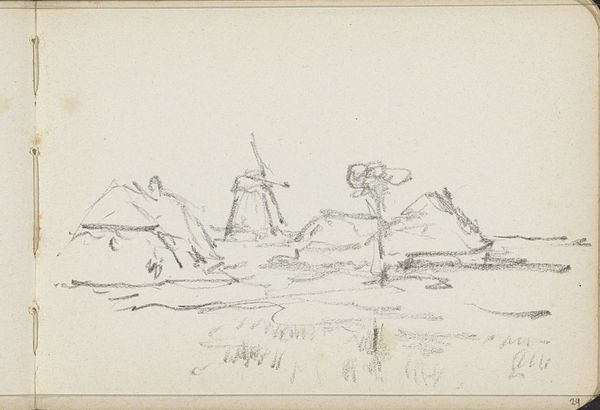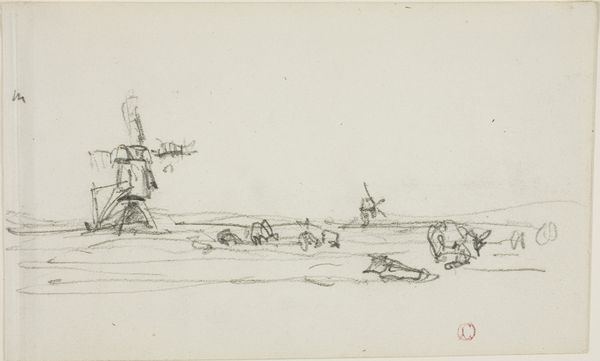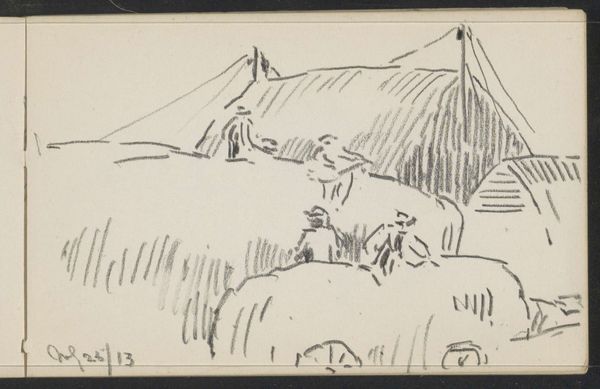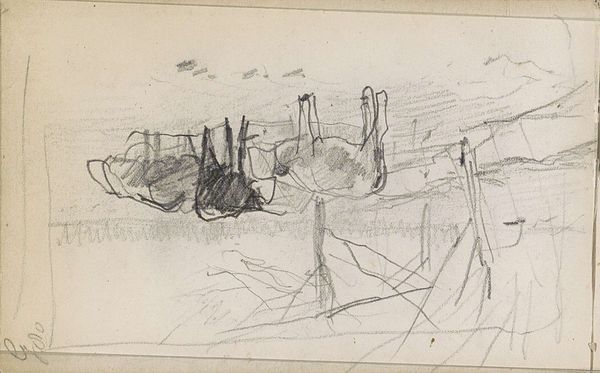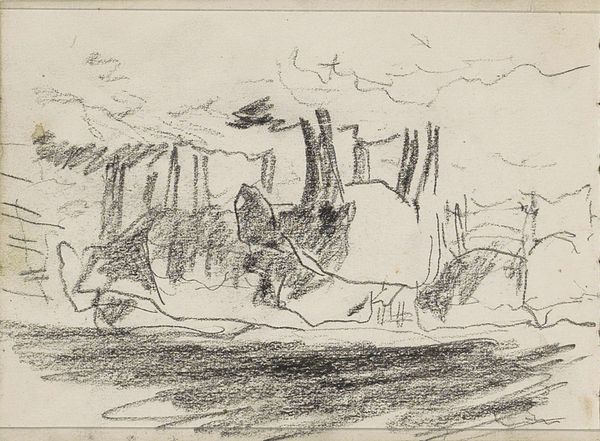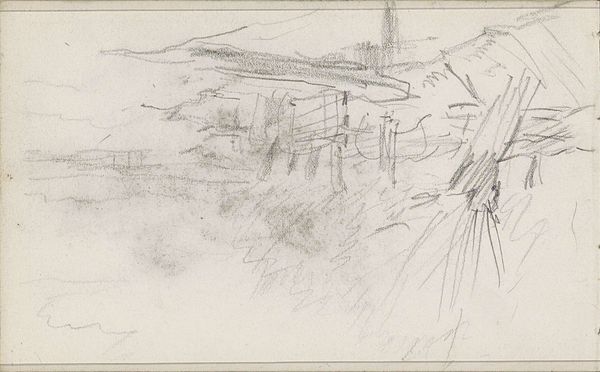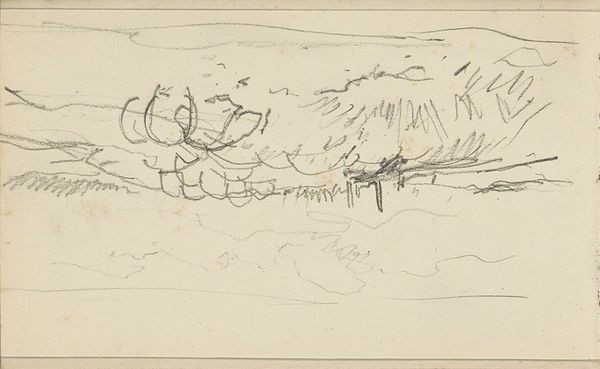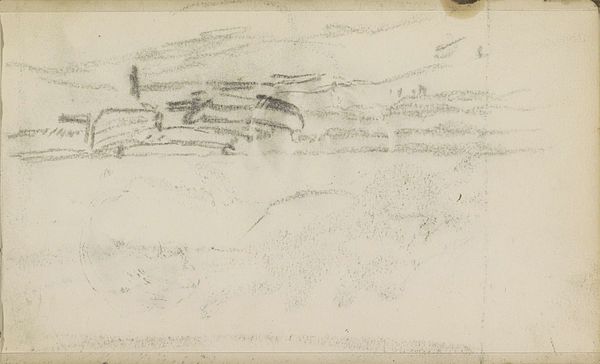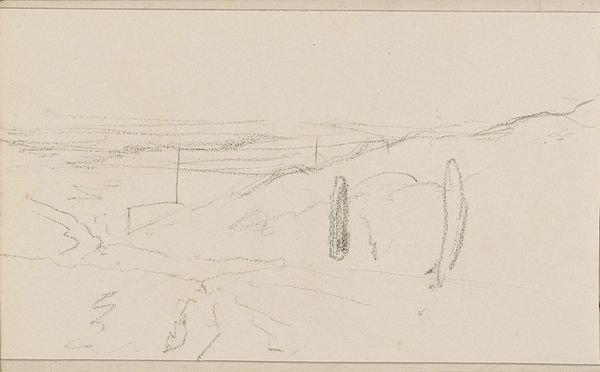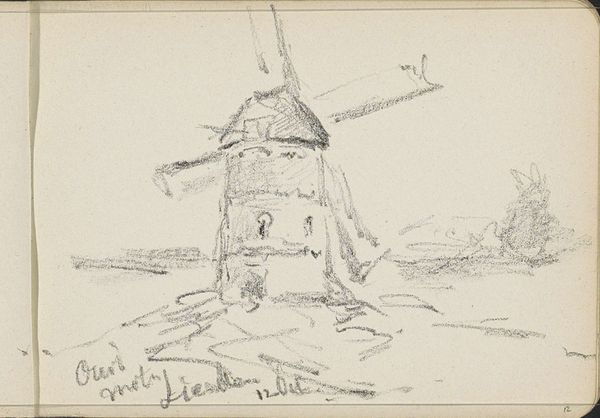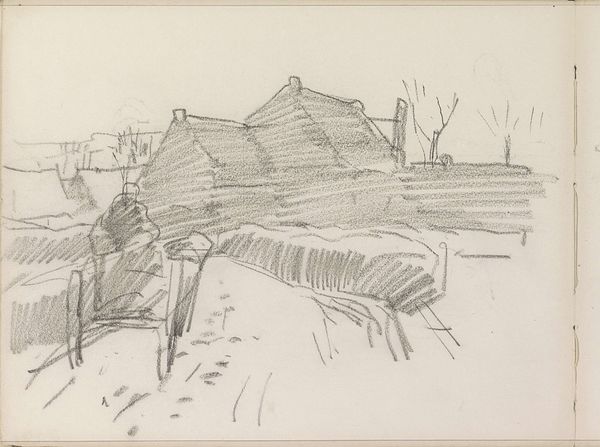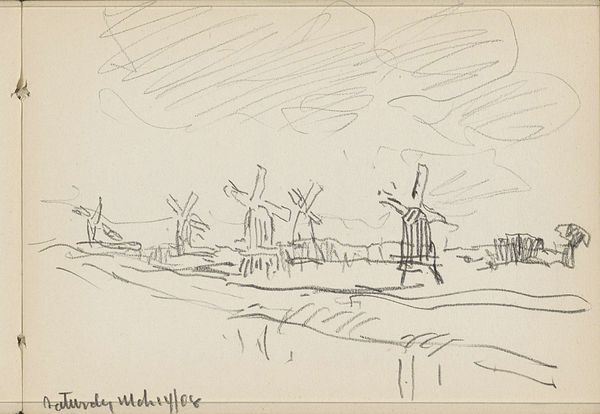
Dimensions: height 116 mm, width 162 mm
Copyright: Rijks Museum: Open Domain
Editor: Here we have Willem Cornelis Rip's "Molen De Hoop bij Veen" from 1905, rendered in what looks like charcoal on paper. The strokes are so rapid, almost frantic. What story do you think this drawing tells, in terms of its historical and cultural backdrop? Curator: Well, consider the historical context. 1905. Rip, deeply rooted in the Hague School, represents a pivotal time in Dutch art where artists grapple with rapidly modernizing society while romanticizing rural life. Windmills weren't just picturesque; they were integral to the Dutch economy and identity. They were vital tools for a struggling community to be self-sufficient. Editor: So the frenetic sketching could reflect anxiety about the changing times? Curator: Precisely. These windmills were symbols of Dutch ingenuity, and rural livelihoods, but increasingly threatened by industrialization. This piece likely becomes an act of preservation, recording a disappearing way of life that Hague School artists, including Rip, deeply valued. Is it simply the beauty of the rural scene, or is it also a social commentary on that period of time? Editor: It's interesting to consider the cultural anxieties baked into what looks like a simple landscape sketch. Almost like visual poetry of socio-economic change. Curator: Indeed, we're witnessing how a quick sketch serves as both documentation and commentary. This sketch, far from a simple depiction, encapsulates the tension between tradition and modernity in early 20th century Netherlands. Something to ponder, no? Editor: Absolutely. I’ll never look at a simple windmill sketch the same way again! Thanks for the insight.
Comments
No comments
Be the first to comment and join the conversation on the ultimate creative platform.
